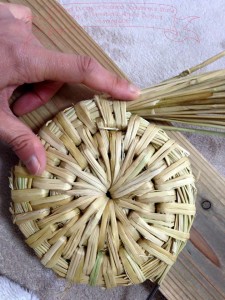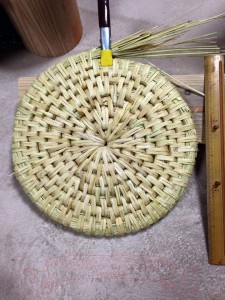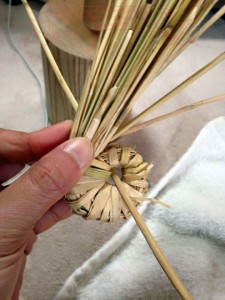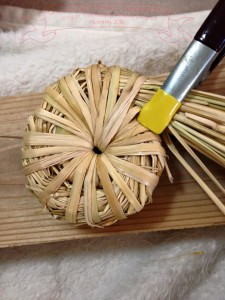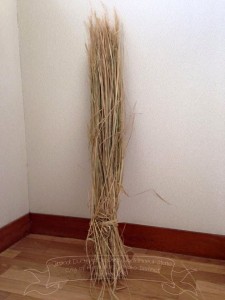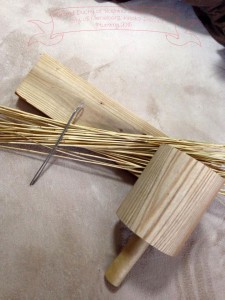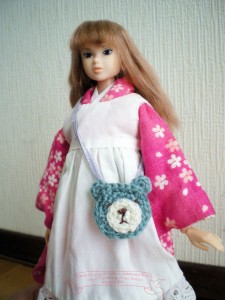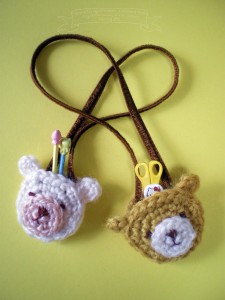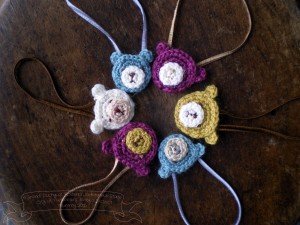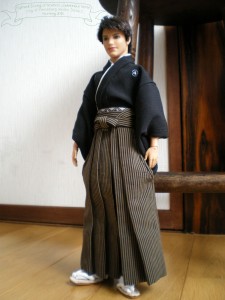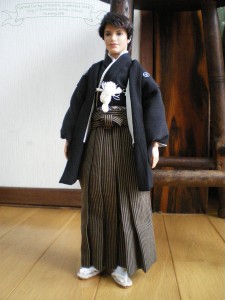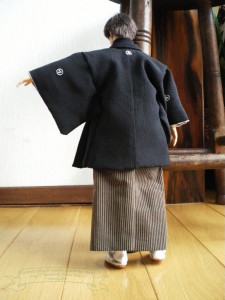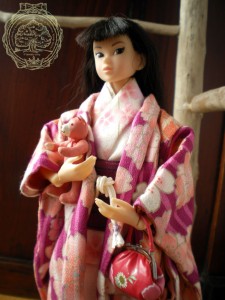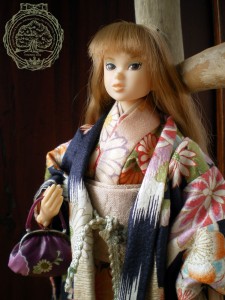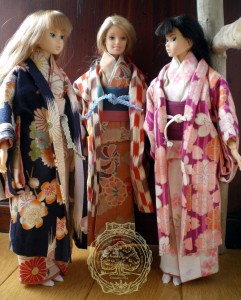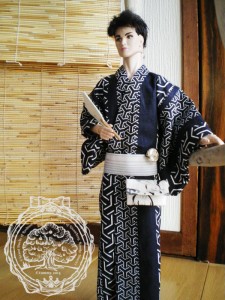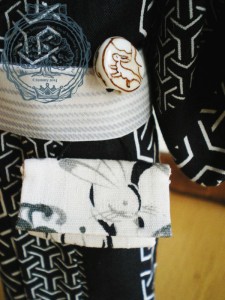Grand Duchy of Roshino, Jodelnneur State, City of Nienieberg, Kinoko District
ロシーノ大公国ヨーデルヌール州ニーニーベルグ市きのこ地区
Neko Chigura 2015-4 猫ちぐら2015の4
Neko Chigura 2015-2 猫ちぐら2015の2
猫ちぐらを作ることは、まず藁を手に入れるところから始まります。
Making of Neko chigura starts with getting fine rice straws.
よくお日様に当て、乾燥させた丈の長いものです。
中くらいの猫ちぐらを作るには、この藁の束が20~30必要になります。
I was lucky to have these nice straws from my friend this year.
They are well-exposed to the sun, well-dried, and long-stemmed.
For medium sized neko chigura, you will need 20-30 of this bundle of straws.
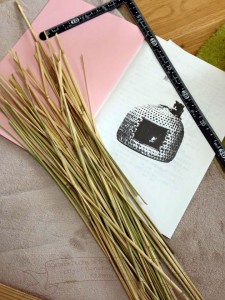 藁はすべて余計な部分を除き、編むのに適した長さに揃えておきます。
藁はすべて余計な部分を除き、編むのに適した長さに揃えておきます。
年に一度の猫ちぐら作りなので、しっかり作り方の本を見直しておきます。
Preparation of straws: eliminate unnecessary parts and cut to the adequate length.
Go over the how to make neko chigura booklet; it’s a once-a-year event
so you don’t want to mess it!
Neko Chigura 2015-1 猫ちぐら2015の1
Nekochigura is a cat house with dome ceiling made out of woven rice straws.
ちぐら、というものはもともと農作業中に赤ちゃんを座らせておくためのもので、
それぞれのお家で作られていたものでした。
Originally, chigura was a woven basket in which baby sits during
parents are working in the farm and was commonly made by individual family.
それをドーム状にして猫のお家にしたところ、多くの猫が喜んで入ってくるように!
Then after making it a cat house with dome ceiling, people found cats actually love and enjoy it!
現在は新潟県の関川村を中心に作られていますが、編める人も少なく時間もかかることから、
注文してから届くまで6年もかかるそうです。
Nekochigura is currently made in several villages in Niigata prefecture, like Sekikawa-village,
however, there are only a few people who can make it and it requires lots of time to make,
now you need to wait 6 years to get one for yourself.
そこで、私は自分で作れるようになればいいと思ったのです。
At that point, I realized “how about making one by myself?”.
もとは、各家庭で作られていたもの、それほど専門的な道具も技術も必要なかったのです。
As I mentioned before, Nekochigura is made by each household, so you
really need neither special tools nor techniques.
関川村の猫ちぐらのご紹介↓Here is a link to Sekikawa-village’s Nekochigura makings
http://www.nekochigura.com/
Doll’s Kimono Montsuki Hakama 1/6サイズドール 紋付袴
着物と羽織の両胸と背中、両袖の後ろに紋が入ります。
これを「五つ紋」といいます。
長着に袴をつけます。
I made a kimono and hakama ensemble with family crests for 1/6 size doll.
It’s Japanese man’s formal attire.
Its kimono and haori have family crests on both sides of chest, back, and back of the sleeves.
They are called “Itsutsumon”, meaning five family crests.
First, put nagagi (ankle-length kimono) and hakama.
Then wear a haori over.
You can see where those family crests are on the back.
Doll’s Kimono & Haori 1 ドールの着物と長羽織その1
長めの羽織は、日本の大正時代から昭和初期くらいに流行したものです。
模様は大柄で、華やかな色遣いのものが多いです。
I made 1/6 size doll’s kimono and naga-baori (long- haori: knee-length kimono coat).
These long length haori (kimono coat) was popular between Taisho and early Showa era in Japan.
They tend to be large and bold color patterns.
Doll’s Kimono Yukata for Boys FR Homme FRさんの浴衣
ケンより背が高く、手足が長いのです。
I made yukata for FR Homme doll from Integrity Toys.
He is taller than Ken and has longer arms and legs than that of Ken.
帯にとめる根付も兎の描かれたものです。
His cigarette case is bunny print.
Netsuke, which is a charm attached to the cord of cigarette case, is
also a bunny motif.
